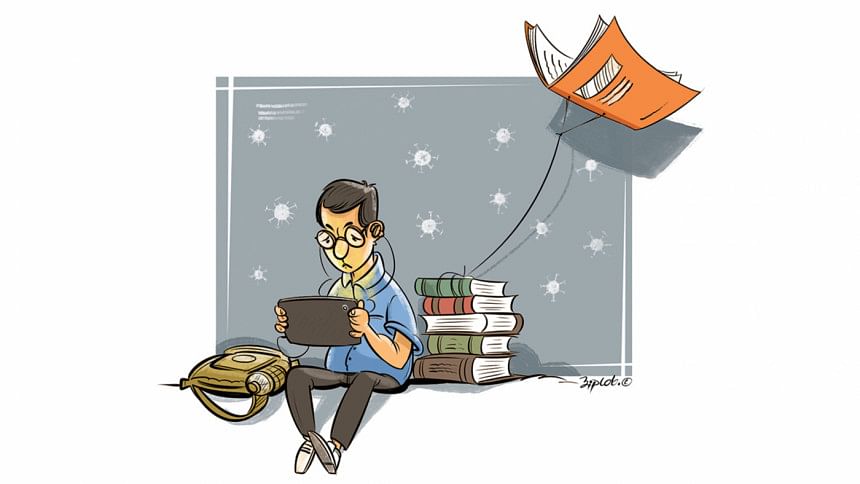Rethinking education under Covid-19: The LLMSC approach

As I write this, I am overrun with a rush of helplessness. I remember feeling the same way when I was preparing for a keynote presentation on the "Recovery of Covid-19 learning loss" that this writing stems from. I keep thinking about why it matters—research, evidence, presenting, writing—when there is such a large gap between evidence and policy, between policy and implementation. Research, especially in times like these, is only as effective as its reach—as the intent with which it is received, heeded and implemented.
We're already late in giving education and educational research the proper focus and investment it needs. In a Project Syndicate article titled "Tackling the Global Learning Crisis", PK Goldberg argues that one component of tackling the current learning crisis is that policymakers, especially in countries with low levels of learning, need to start placing high priority on education. The other component highlights the need for "laser-like" focus on cost-effective interventions and in the process, labels bulk purchases of hardware like laptops as "bad buys", since such purchases yield disappointing results in terms of learning improvement compared to cost. This means that just investing in hardware is not smart. We need to strategically target funds towards what research suggests is effective.
There is evidence from school closures during past crises as well as from the ongoing pandemic. Based on the evidence, our plan for education in Bangladesh should be divided into short-term and long-term goals. The short-term goals would be immediate plans of action, while the long-term goals would be about reforming our education system at the core. By combining the two goals, I propose the LLMSC approach in rethinking education in the light of Covid-19. The LL refers to learning levels, M stands for (learning) materials, the S is for software and C stands for community. Each part of the approach stems from research-based evidence.
First, research indicates that education should be tailored according to learning level and not age. Often, children may not be at the learning level that they are supposed to be at despite being at the age of that learning level. Targeting lessons according to learning levels helps in strengthening learning. To identify learning levels, we need standardised tests. Most importantly, we need to change the narrative of tests. Tests or exams in our education system are more to do with competition than with identifying an individual's learning level, and this needs to change. The purpose of exams should be to identify students' learning levels so that the student can be catered to accordingly. The purpose should not be to identify students' ranks amongst their peers.
Second, the M part of the approach leads on from learning levels and entails that learning materials should be created targeting different learning levels. We should be prepared for the fact that these learning materials may need to be distributed either offline or online. Moreover, we should keep in mind marginalised groups, such as children who were out of formal schooling even before the pandemic. For instance, self-instructional learning materials have proven to be helpful in the case of children who do not have access to teachers or online learning.
The S part of the approach represents the need to invest smartly in software and not just hardware. Instead of bulk buying laptops for students, a better approach would be to invest in software too, such as Computer Assisted Learning (CAL) software. In interventions conducted in India and China, the use of CAL software obtained promising results in improving the learning of academically weaker students especially.
Lastly, the C in the LLMSC approach is a call for a community approach in tackling the problems in our education system. While the responsibility of students' learning may fall more upon teachers and parents, everyone in the community needs to be convinced of the importance of quality education. Especially in a country like ours, where many families may be inclined to make their children drop out of school and become involved in income earning in these hard times, it is crucial that we campaign to establish the importance of children's schooling, as well as provide financial help to incentivise children's return to education. Bangladesh has a bold past in terms of campaigns. I remember, from our childhood days, the campaigns towards treating diarrhoea in children. Before that, there was the even more widespread campaign for population control. Just think about how many of us have a significantly fewer number of siblings than our parents and grandparents' generations. We need such powerful campaigns now, more than ever, to motivate and convince people of the power of education.
While the LLMSC approach is for the education of school and college-going children, we cannot forget the university students, especially those whose education is most under jeopardy—public university students. Private university students are fortunately proceeding with their studies and exams online. The transition has not been as smooth in the case of public universities. There are two matters to address here. First, the learning loss due to the disruption of regular studies and second, the session jam. Our solutions to these need to be separate because we have simply lost too much time to devise effective strategies that may address both. In mitigating learning loss, we can develop and share learning materials and engage students, using creative pedagogies, to truly learn. In the case of session jam, we need to urgently opt for alternative assessment methods, especially for batches on the verge of graduating. One option is to pursue portfolio-based assessment, which allows sufficient scope to be innovative. In truth, any assessment method we undertake will have pros and cons. The most important thing right now is that we facilitate students to graduate. Especially for the University of Dhaka, which is set to step into its hundredth year in July, we do not want to make that step with our students' futures hanging in the balance.
There are always solutions to any problem, and we need to be innovative and remember that one size cannot fit all. Sometimes, the best solutions are the simplest ones. Like, in reopening schools in villages, something we must prioritise, teaching outside in the shade of trees instead of inside in classrooms may just be the current (with all its disadvantages) best solution.
Rubaiya Murshed is a PhD student at the University of Cambridge and Lecturer at the Department of Economics, University of Dhaka. This article is based on the author's keynote presentation at the "Economics Circle" webinar on March 25, 2021.

 For all latest news, follow The Daily Star's Google News channel.
For all latest news, follow The Daily Star's Google News channel. 



Comments